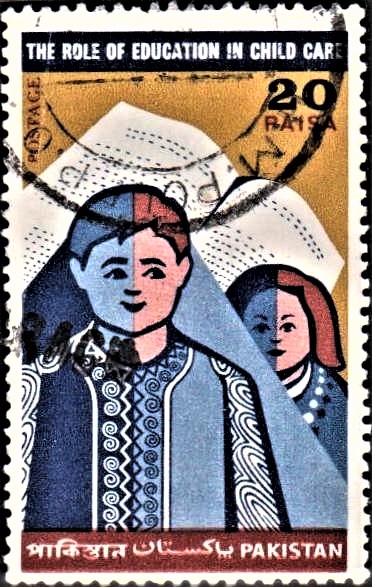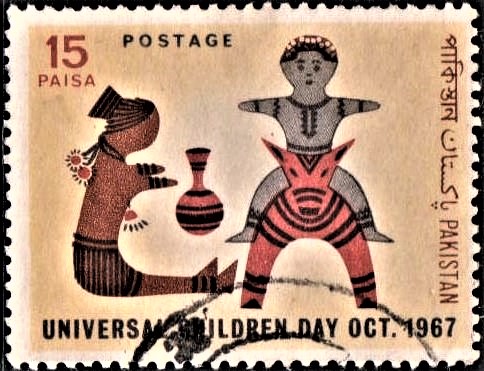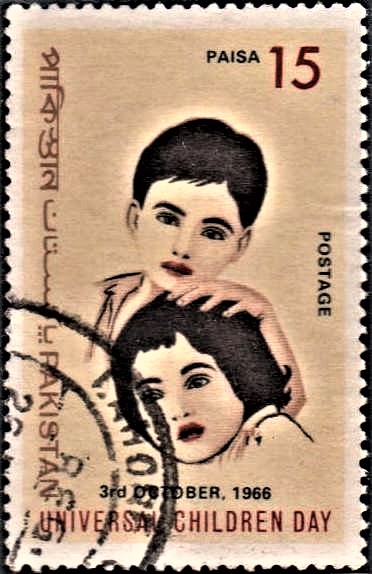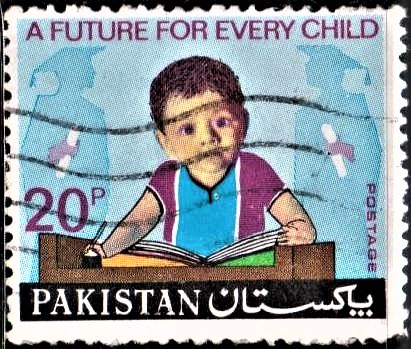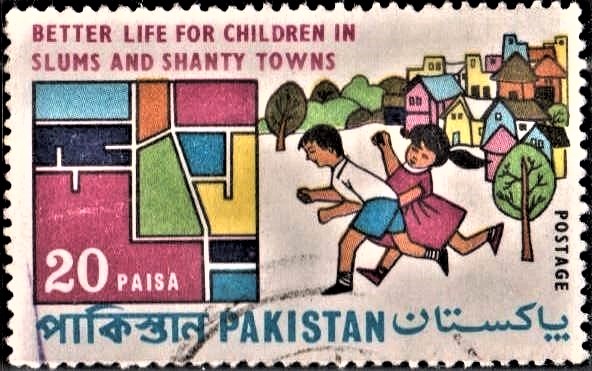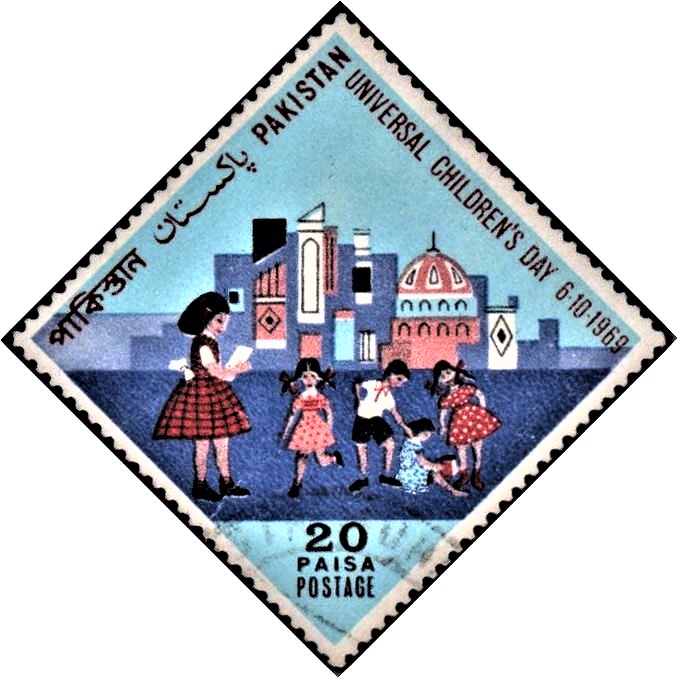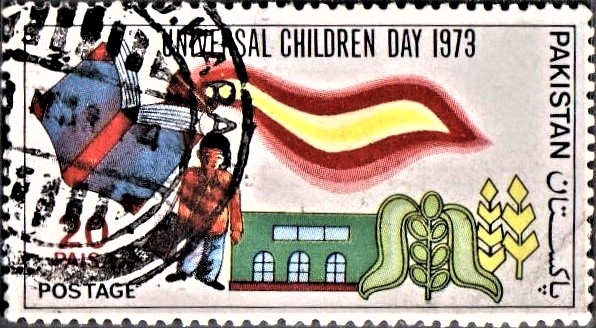
Pakistan on Universal Children’s Day 1973
A commemorative postage stamp on the Universal Children Day – the Rural Child :
 Issued by Pakistan
Issued by Pakistan
Issued on Oct 1, 1973
Design : Format of the stamp is horizontal. An open book with a blue cover is shown with a lighted torch behind it. The yellow and red flame of the torch spreading over a vast area symbolises the spread of education. A young rural boy in orange coloured Kurta and blue Shalwar is shown standing under the book and the torch by the side of the school building.
Type : Stamp, Postal Used
Denomination : 20 Paisa
Colour : Ultra–marine/Vermillion, Red/Yellow and Black
Size of Stamp : 27 m.m. x 50 m.m.
Size of Print : 24 m.m. x 47 m.m.
Perforation gauge : 13½ x 13 (c)
Quantity printed : 5,00,000
Number of stamps in each sheet : 50
Process of printing : Litho Offset
Printers : The Pakistan Security Printing Corporation Ltd., Karachi
About :
- Each year Universal Children Day is celebrated throughout the world on the first Monday of October. A world-wide “Children Day” was originally proposed in 1952 by the International Union for Child Welfare (IUCW) and was celebrated for the first time internationally in October, 1953; 40 countries participated. When the United Nations General Assembly passed a formal Resolution establishing ‘Universal Children Day’ in 1954 it assigned to UNICEF the responsibility for promoting this annual “day of world-wide fraternity and understanding among children“. The number of countries and territories in which the Day is observed has risen from 40 in 1953 to more than 100.
- The universality of children is the permanent underlying theme. In addition, each year a special theme is chosen to stress one important aspect of children’s lives. This year the special theme is “THE RURAL CHILD“.
- The conditions confronting the rural child merit our deepest concern. No fewer than 810 million infants and children under the age of fifteen are growing up in rural areas in the developing countries – three and a half times as many children as live in urban areas. Trips to moon have been launched on the one hand yet on the other in many parts of the world, reaching a village is difficult even today. Huge parts of our planet are still under-developed. Most of the world’s children live in rural isolation, far from schools, health centres or social services. Children are an invaluable wealth being tragically wasted in many parts of the world.
- In many a developing country water supplies for drinking, cooking, agriculture and sanitation are dangerously inadequate and unreliable. Contaminated water is a major cause of infectious diseases which attacks millions of rural children, resulting in a very high death rate among those children who manage to survive their first year of life.
- The United Nations Children’s Fund and the International Union of Child Welfare urge that world attention be directed on Universal Children Day to the extreme disadvantages and obstacles which so many of these rural children face. Good education is the essential key to a happy and useful future. All children are members of one human family and have the same needs and rights. They need food, shelter, health care, education and hope. We should do whatever we can to help children.


